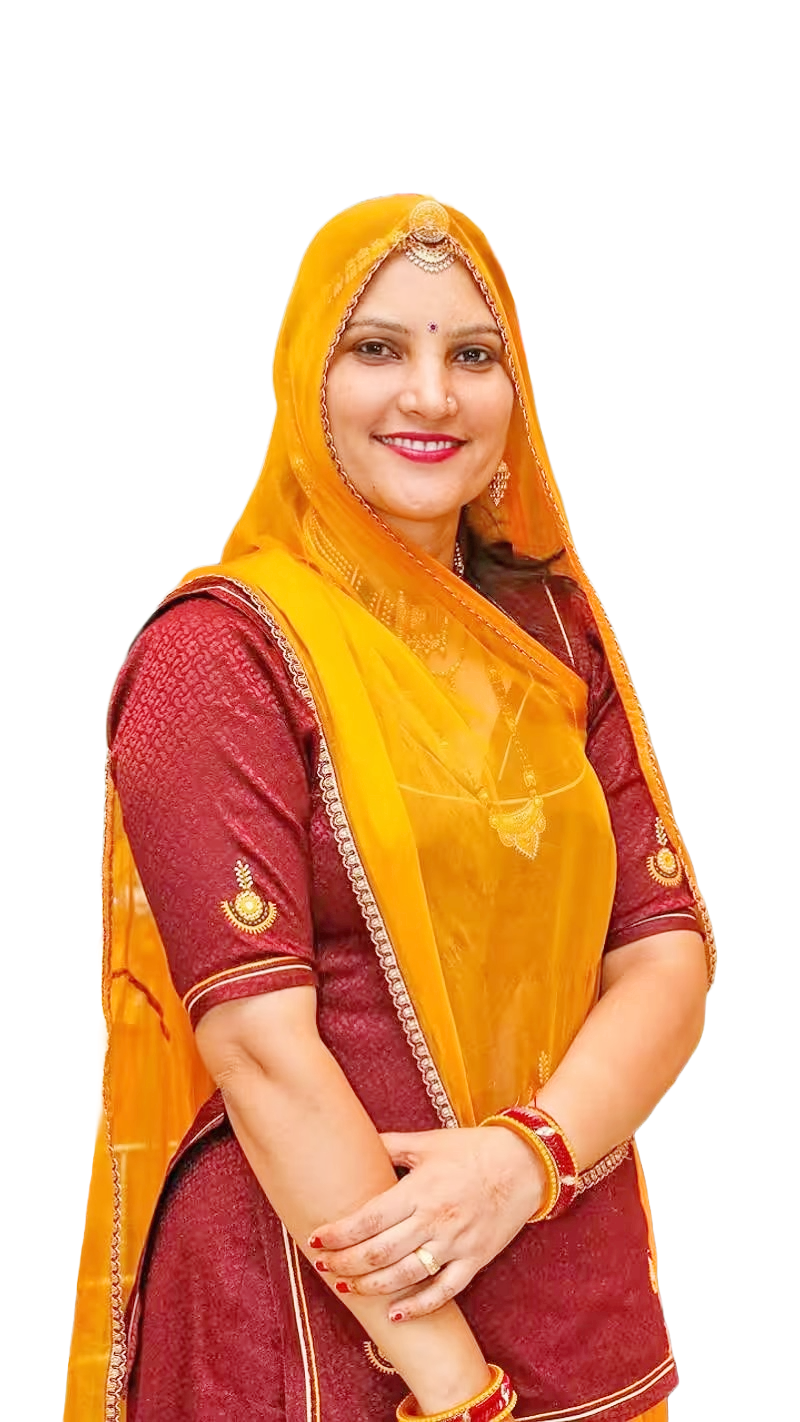
Introduction:
In the heartland of India, where the vibrant colors of tradition meet the struggles of rural life, one woman has emerged as a beacon of change, weaving dreams of empowerment for countless others. Ruma Devi, a name synonymous with resilience and transformation, has tirelessly dedicated herself to uplifting the lives of women in her community through the age-old craft of handloom weaving. This feature article delves into the inspiring journey of Ruma Devi and the profound impact she has had on the lives of women around her.
The Early Threads:
Ruma Devi’s story begins in the quaint village of Barmer, nestled in the arid landscapes of Rajasthan. Born into a family deeply rooted in the tradition of handloom weaving, she grew up surrounded by the rhythmic clatter of looms and the kaleidoscope of threads. From an early age, Ruma Devi developed a profound love for the craft, recognizing its potential not just as a means of livelihood but also as a tool for social change.
Empowering Through Threads:
As she stepped into the shoes of her ancestors, Ruma Devi faced numerous challenges. In a society where gender norms often stifled the aspirations of women, she dared to dream beyond the conventional boundaries. Devoting herself to the art of handloom weaving, Ruma Devi soon realized that the key to empowerment lay in imparting her skills to other women in her community.
Establishing the Mahila Hastshilp Samiti:
In 1996, Ruma Devi took a groundbreaking step by founding the Mahila Hastshilp Samiti, an organization aimed at empowering women through skill development and economic independence. The samiti became a haven for women seeking refuge from the shackles of societal norms, providing them with not just a means of income but also a platform to voice their aspirations.
Reviving Traditional Crafts:
Ruma Devi’s vision extended beyond the economic upliftment of women; she aimed to preserve and revive the traditional crafts of her region. With a keen eye for design and innovation, she introduced contemporary elements to the traditional handloom products, making them marketable to a wider audience. Through her efforts, she not only sustained a dying art but also ensured that the women involved received fair compensation for their craftsmanship.
Impact on Education:
Realizing that education is the cornerstone of empowerment, Ruma Devi worked tirelessly to ensure that the women in her community had access to quality education. She initiated several programs that encouraged girls to pursue their studies while simultaneously engaging in handloom weaving. By breaking the stereotype that education and traditional crafts are mutually exclusive, she opened new doors for the women in her community.
International Recognition:
Ruma Devi’s efforts did not go unnoticed on the global stage. Her innovative approach to traditional handloom weaving caught the attention of international organizations, leading to collaborations and partnerships that further expanded the reach of her initiatives. As her story gained global recognition, it became a testament to the transformative power of grassroots efforts in empowering women.
Challenges and Triumphs:
The path Ruma Devi treaded was not without hurdles. She faced resistance from conservative elements in her community, challenging age-old norms that relegated women to domestic roles. However, her unwavering determination and the tangible impact of her work gradually won over skeptics, turning them into advocates for change.
Legacy of Empowerment:
Today, Ruma Devi’s legacy is etched in the lives of countless women who have benefited from her tireless efforts. The Mahila Hastshilp Samiti continues to thrive, expanding its reach and impact. The women who were once confined to the margins of society now stand tall, not just as skilled artisans but as leaders and change-makers in their own right.
Impact on Economic Empowerment:
Ruma Devi’s initiatives have had a profound impact on the economic landscape of her community. Through the Mahila Hastshilp Samiti, she not only provided women with a platform to showcase their skills but also equipped them with the necessary tools to become entrepreneurs in their own right. The handloom products crafted under her guidance found markets not only within India but also internationally, bringing economic opportunities to the doorsteps of rural artisans.
The financial independence gained through handloom weaving has not only improved the standard of living for these women but has also given them a sense of agency and self-worth. Many of the women who once struggled to make ends meet are now contributing significantly to their household incomes, challenging traditional gender roles and reshaping the economic dynamics of their families.
Impact on Social Dynamics:
Ruma Devi’s work has had a ripple effect on the social fabric of her community. By empowering women to step into the workforce and contribute financially, she has challenged deeply ingrained stereotypes and norms that relegated women to the confines of the home. The women, once confined to the periphery of decision-making processes, now actively participate in community matters, bringing a fresh perspective and energy to the social dynamics of the village.
Moreover, the sense of camaraderie and mutual support fostered within the Mahila Hastshilp Samiti has created a strong network of empowered women. These connections extend beyond the confines of the organization, creating a web of support that transcends familial and societal boundaries. Ruma Devi’s impact on social dynamics is not just about economic contributions but also about fostering a sense of community and solidarity among women.
Impact on Cultural Preservation:
Ruma Devi’s dedication to reviving traditional crafts has not only sustained a cultural heritage but has also elevated the status of these crafts within the broader cultural landscape. The handloom products, infused with contemporary designs and patterns under her guidance, have found appreciation not just in local markets but also in global forums.
Through her efforts, Ruma Devi has ensured that the rich cultural tapestry of handloom weaving is passed down from generation to generation. By instilling a sense of pride and value in traditional crafts, she has safeguarded a heritage that was at risk of fading away. The preservation of these cultural practices has not only provided economic opportunities but has also played a crucial role in maintaining the identity and uniqueness of her community.
Impact on Education and Skill Development:
Ruma Devi recognized early on that education is a powerful tool for empowerment. By intertwining education with handloom weaving, she created a unique model that not only allowed women to acquire traditional skills but also encouraged them to pursue formal education. This dual approach has not only equipped women with practical skills but has also opened doors to a wider range of opportunities.
The emphasis on skill development has gone beyond traditional handloom techniques. The women under Ruma Devi’s guidance have gained proficiency in marketing, entrepreneurship, and business management. These skills not only enhance their employability but also position them as leaders within their communities.
Conclusion:
Ruma Devi’s impact goes far beyond the looms and threads of handloom weaving. It extends into the realms of economic independence, social transformation, cultural preservation, and educational empowerment. Through her unwavering commitment, she has sparked a revolution in rural Rajasthan, leaving an indelible mark on the lives of countless women. As her legacy continues to unfold, it serves as a beacon of hope, proving that one woman’s dedication can create a ripple effect, transforming not only individual lives but entire communities. Ruma Devi stands as a living testament to the immense potential embedded in the threads of tradition and the power of grassroots initiatives in shaping a more equitable and empowered society.
In the intricate tapestry of rural Rajasthan, Ruma Devi’s story stands out as a testament to the transformative power of passion, perseverance, and a deep commitment to uplifting others. Through her dedication to handloom weaving, she has woven a brighter future for countless women, leaving an indelible mark on the fabric of empowerment. As her legacy continues to unfold, Ruma Devi remains an inspiration for individuals and communities alike, proving that the threads of change can be spun from the looms of tradition.















